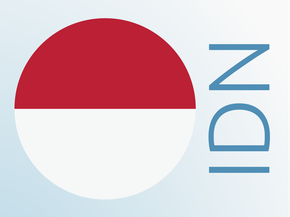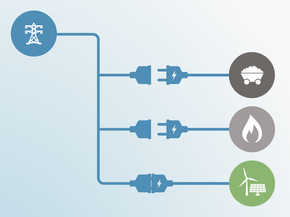Pledges And Targets
Summary table

Paris Agreement targets
Indonesia’s current NDC includes a unilateral reduction target of 29% below BAU emissions of GHGs, including land use, land-use change, and forestry (LULUCF), by 2030, plus a conditional target of up to 41% reduction below BAU with sufficient international support.
An NDC update is underway but Indonesian media reports that the government is likely to maintain the current level of emission cuts (Aqil, 2020). A government official stated that Indonesia wants to focus on existing targets which are linked to their economic growth (Jong, 2020b). The NDC update still awaits approval by the line ministries as Indonesia’s priority is to deal with the crisis resulting from the COVID-19 outbreak (Zulfikar, 2020). Maintaining the same level of emission reductions in its NDC is contrary to the Paris Agreement requirement that each successive NDC should present a progression beyond the current one. For an up-to-date overview of the status of NDC submissions see our Climate Target Update Tracker.
Indonesia’s current NDC specifies a BAU scenario and the contribution of different sectors to achieving the reductions below BAU. The absolute emissions levels resulting from the unconditional NDC reach 1,817 MtCO2e/year in 2030 excl. LULUCF, the conditional NDC leads to 1,629-1,723 MtCO2e/year excl. LULUCF. This means relative reductions of 16% and 24%/20% below BAU excl. LULUCF respectively and an increase of 158% and 131%/145% compared to 2010 emissions levels excl. LULUCF. While the Indonesian NDC would lead to reductions in the LULUCF sector emissions, other emissions are still allowed to more than double compared to today’s levels by 2030.
There is a lack of clarity around the conditional target: while the text in the NDC reads up to 41% below BAU, a more detailed table includes reductions of 38%. Indonesia’s Third National Communication and Biennial Update Report have the same inconsistency (Republic of Indonesia, 2018c, 2018b; Tacconi, 2018). This difference raises questions on whether the country has plans to achieve the target established in its NDC or whether it has scaled down its already low ambition. The CAT presents the conditional target as a range to reflect this lack of clarity. The upper range is given by the 38% reduction presented in the NDC and the lower range assumes that the further emissions reduction required to reach the 41% target is expected from non-LULUCF sectors.
The NDC reiterates the target shares of coal, oil, gas and “new and renewable energy” in TPES until 2050 given by the National Energy Policy (NEP)—“Government Regulation No. 79/2014 on National Energy Policy, set out the ambition to transform, by 2025 and 2050, the primary energy supply mix with shares as follows (...)“. It is unclear whether these NEP targets are part of Indonesia’s NDC commitment. The historical trend and current shares of energy carriers in TPES are shown in the table below (MEMR Indonesia, 2017a, p. 11) along with the target shares in 2025 and 2050 as per the National Energy Policy.

*The NEP targets are for both ‘Renewable Energy’ and ‘New Energy’ (i.e. energy produced from new technology from renewable and non-renewable energy sources, e.g. including nuclear). RE is excl. traditional biomass and incl. biofuels.
The NEP targets may be more ambitious than the NDC suggests. We have quantified the potential effect of their achievement in addition to the NDC commitment. The upper range of our planned policy projections is based on the achievement of the NEP and results in emissions significantly below the NDC targets. While policies are in place to increase the share of renewables (e.g. a biofuel blending mandate and a feed-in tariff), our current policy projections do not.
We also quantified the potential impact of the medium-term development plan (RPJMN 2020-2024). A first order estimate indicates that the renewable capacity targets in the this plan would result in an overachievement of the NEP targets, leading to a renewables share of over 30% of total primary energy supply by 2024 (see Assumptions).
These two targets could result in emissions of 1,136–1,263 MtCO2e/year excl. LULUCF in 2030, substantially below the NDC target of “29% below BAU,” and even stronger than the conditional target of “41% below BAU.” While integrating these targets into the climate commitments would be beneficial, it is likely that the 2025 target for total primary energy supply will not be achieved (Bridle et al., 2018). The resulting emissions level is already below both unconditional and conditional targets, which are between 1,629 and 1,817MtCO2e/year in 2030 (excl. LULUCF), and would result in a CAT "Insufficient" rating.
2020 pledge
In September 2009, the government proposed to cut emissions (incl. LULUCF) by 26% by 2020 from BAU levels and submitted it to the Copenhagen Accord on 30 January 2010. In April 2011, Indonesia clarified that, in addition to its 26% target, it proposed a 41% reduction below BAU target conditional on international support for Nationally Appropriate Mitigation Actions (NAMAs) (Republic of Indonesia, 2011).
Using the BAU and sector contributions as specified in the Second Biennial Update report, the unconditional commitment leads to 1,121 MtCO2e/year in 2020 excl. LULUCF (8% below BAU), and the conditional commitment to 1,089 MtCO2e/year in 2020 excl. LULUCF (11% below BAU). According to the Second Biennial Update Report, about 80% of the reductions for the 2020 target would come from reducing LULUCF emissions (Republic of Indonesia, 2018a).
Long-term vision
In 2015, Indonesia presented a vision for the country in the year of its 100th anniversary (2045) that includes several targets to improve people’s welfare and ensure Indonesia’s development up to 2045. The government recognises that climate change might “pose a hindrance to realising the Indonesian dream in 2045”, so it aims to develop its long-term strategy (LTS) in line with the targets presented in Indonesia’s 2045 vision, which includes an emission reduction target of 41% below BAU in 2045.
In March 2019, the Ministry of National Development Planning (BAPPENAS), in collaboration with development partners, released the results of the Low Carbon Development Initiative (LCDI) (Ministry of National Development Planning (BAPPENAS), 2019). The report includes different long-term (2017-2045) emissions pathways together with the policy and development implications of each. These results, together with other modelling exercises, aim to support the elaboration of Indonesia’s LTS.
Besides presenting a baseline, this analysis puts forwards three more ambitious scenarios and compares those to Indonesia’s key climate targets. The scenario compatible with the 2045 vision would also achieve the 2030 NDC conditional target but still result in increasing emissions between 2030 and 2045. The total emissions, incl. LULUCF, would increase by about 30% between today and 2045. The only scenario that would bend emissions downwards would halve total emissions by 2045.
While the CAT does not include LULUCF in its analysis, an increase in emissions up to 2050 is not in line with any “fair” interpretation of a 1.5°C Paris Agreement compatible pathway (see Fair Share).
Further analysis
Country-related publications
Stay informed
Subscribe to our newsletter






